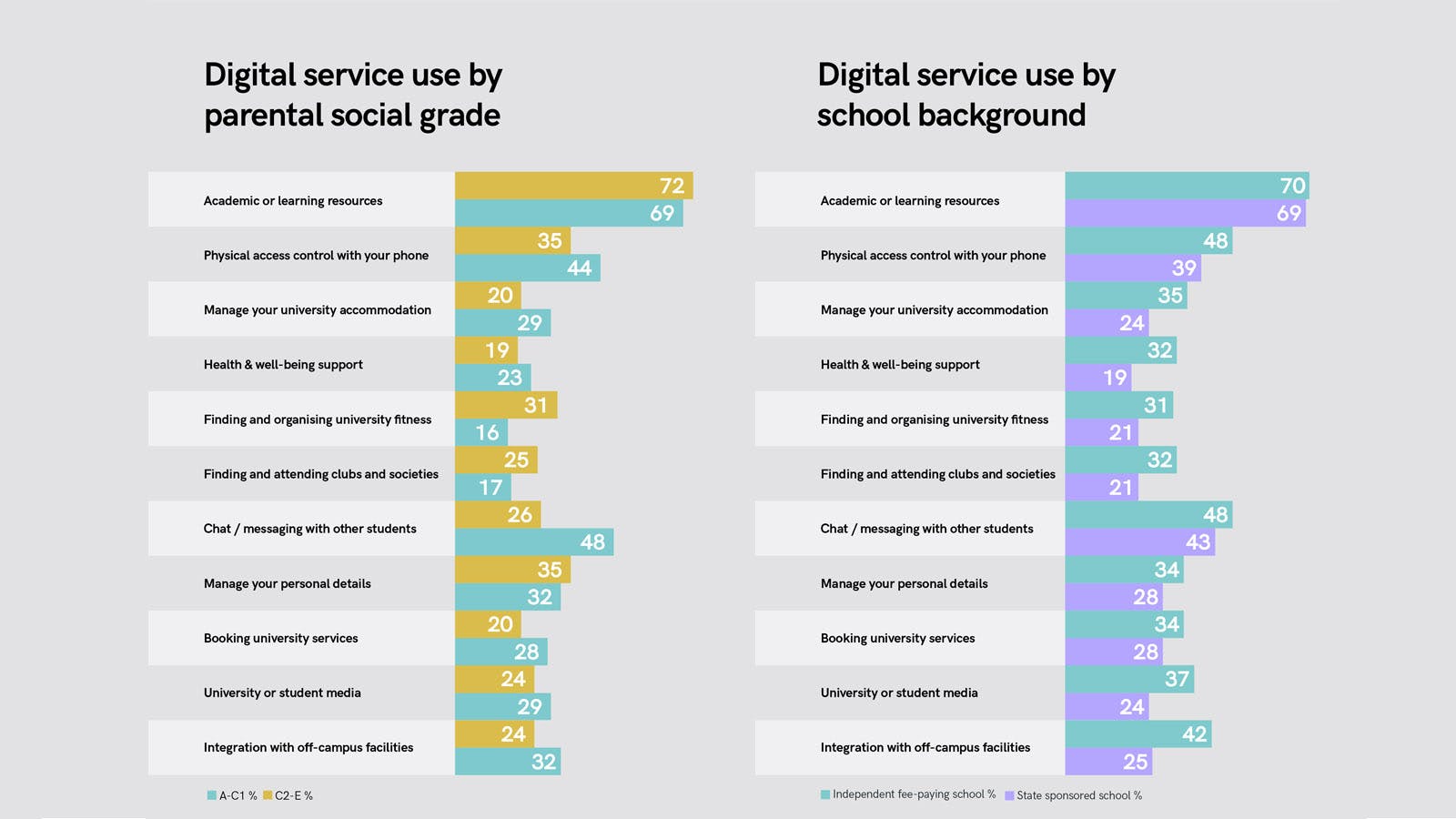Closing the diversity gap in HE: will digital help or hinder?
The UK’s digital skills gap is now a huge focus for government, business and higher education institutions.
Much of the agenda is rightly focussed on education and course delivery that is designed to provide graduates with the skills to succeed in our increasingly digital economy. A recent report by the Department for Digital, Culture, Media and Sport found for example that almost half of businesses (48%) are recruiting for roles that require hard data skills, but 46% struggle to find the right candidates.
But could the experience of digital services born from digital access and encouragement also play a part? And could universities make a contribution to levelling-up by providing excellent digital learning experiences and wider digital services?
As part of our Higher Education Digital Experience Report, we explored the expectations of students. We asked them what kind of digital services they expect to receive while studying for a degree.
We found that overall and by a huge majority, the current digital native generation see the digital campus experience as important as a traditional face-to-face university life and learning.
However, we also found a significant difference in expectations between those from ethnic minorities, lower income households and state schools compared to their white, male, privately educated peers. Our study found a consistent experience gap, with more privileged students utilising digital services significantly more.
Students with a fee-paying school background and those from higher socio-economic groups are also more likely to use non-learning digital experiences frequently, despite a marginal difference in the use of academic/learning resources among these groups.

Our report found that students from an ethnic minority background are less likely to say a good digital experience helps them to perform better academically (83% for students who identify as black and 91% for students who identify as white). The research highlighted yet more differences based on student demographics. Male students and students from a fee-paying school background were more likely to say that the digital experience was a factor in choosing their university.
These findings raise a number of questions that universities seeking to use digital services to help enhance their inclusivity performance must tackle.
Is it that students from ethnic minorities and those generally from lower socio-economic backgrounds have lower expectations of what digital can do, or are they less likely to know what it can do for them?
Given that most school-age students have a smart phone and are adept users of social media, messaging and other technologies, why might this be the case?
Are students with a fee-paying school background and those from higher socio-economic groups more likely to seek out and use digital services in their lives in general? And specifically, are they more used to educational or business-orientated services? Were these students more likely to already use digital experiences, and therefore to expect them from their university, than other groups? In effect, does this hint at a specific sort of digital poverty that exists in society?
Interestingly our study also found that female students and those with a fee-paying school background were more likely to want digital services from their university after they graduate. Does this suggest a specific challenge for males and state school background students who either feel they don’t need that connection or simply assumed they wouldn’t receive such support? Do these groups expect universities to be more traditional face-to-face organisations? What could the reasons be for the differences in each of these groups?
The research highlights the complex problem universities face in attempting to up-grade their learning and wider campus experience, whilst enhancing inclusivity at the same time.
Equally important is the need for deeper research to understand specific student segments better, as is ensuring there are robust processes to remove any bias in the design of products. Crucially, its highlighted the need for every student voice to be heard in order to design digital experiences of value for all, rather than for those who shout the loudest having a greater stake in the design of digital platforms, which after all, are supposed to be used by all. This means testing any new digital developments across the student population, not just with the students that are easy to access. Generally speaking however, the overwhelming message from students is that their expectations of higher education digital services are very high.
A consistently great and multi-faceted digital experience at university could help those with lower expectations gain confidence before they are exposed to infinitely wider digital possibilities and challenges in the workplace. In addition, the potential for digital touch points that positively impact not only academic outcomes, but also wellbeing, begin from as early as enrolment. Starting early could mean that no student gets left behind.
If you'd like to talk to us more about inclusively designed digital services within higher education, get in touch.